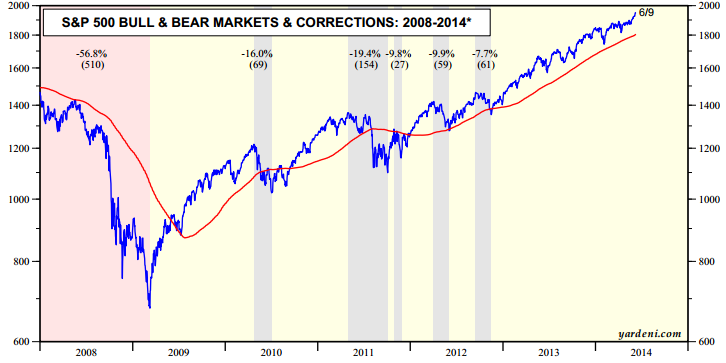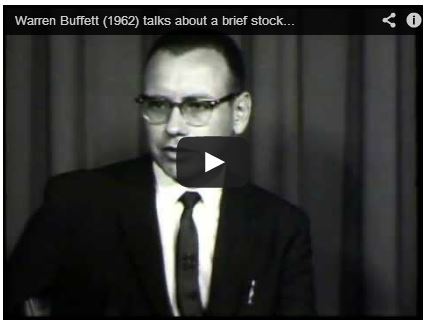OK, so maybe the short suit won’t be the new summer fashion trend to help lift the struggling retail sector out of its recent funk.
However, the idea of short sellers providing fuel for the next potential leg higher isn’t as far-fetched.
Short sellers — traders who attempt to profit from stock declines by betting against the market — have been gluttons for punishment in recent years. The S&P 500 has nearly tripled from the financial-crisis, and the index hasn’t suffered a correction of 10% or more in nearly three years.
“For five years it’s been the fate of American short sellers to be wrong, as the biggest rally since the Internet bubble steamrolled defensive trades,” Bloomberg News reports.
The market you love to hate
Still, the market has its fair share of doubters who think we’re way overdue for a correction.
“This is one of the most-hated bull markets,” said Stephen Solaka at Belmont Capital Group, in the article. “A lot of people are praying for the market to fall. There are a lot of professional shorts. It’s been a painful trade.”
They may not have learned their lesson just yet. Incredibly, there are signs that short sellers are gearing up again with bearish bets against the market.
“That, from a trader’s standpoint, is a bullish sign, because you don’t have too much optimism in the market,” a portfolio manager at BB&T Wealth Management told Bloomberg. “That there isn’t unbridled optimism shows that there could be more upside.”
Short squeezes and sentiment
Some investors keep a close eye on the positioning of other investors and sentiment polls to guess the market’s next move. When investors are overwhelmingly bullish and fully committed to stocks, it may signal a dearth of potential buyers to drive the next leg higher. In other words, there is no one left to buy stocks.
Similarly, a high number of bearish wagers against the market can trigger a so-called short squeeze and stock rally. When the market rises, short sellers fearing more losses end up closing their positions by buying stocks, pushing the market even higher.
So short sellers are feeling their oats again, which has actually been a bullish sign in recent years.
Yet when it comes to investor sentiment, the tea leaves are tougher to read. Newsletter writers are extremely bullish at the moment, while individual investors appear to be somewhat wary with the S&P 500 at all-time highs.
Add it all up and it seems like we’re not really in the mania phase that tend to mark major market tops.
Photo credit: bobbie vie via Flickr Creative Commons
DISCLAIMER: The information in this material is not intended to be personalized financial advice and should not be solely relied on for making financial decisions. All investments involve risk, the amount of which may vary significantly. Past performance is no guarantee of future results.






